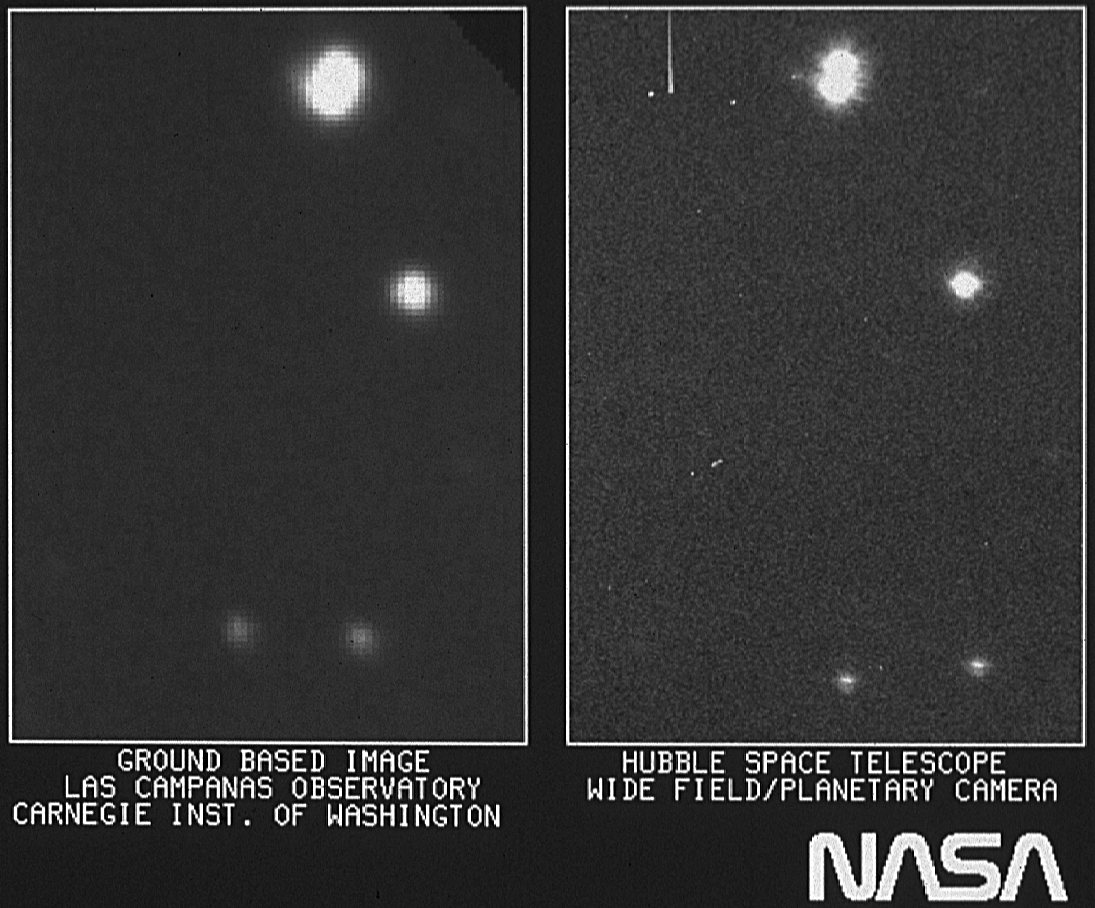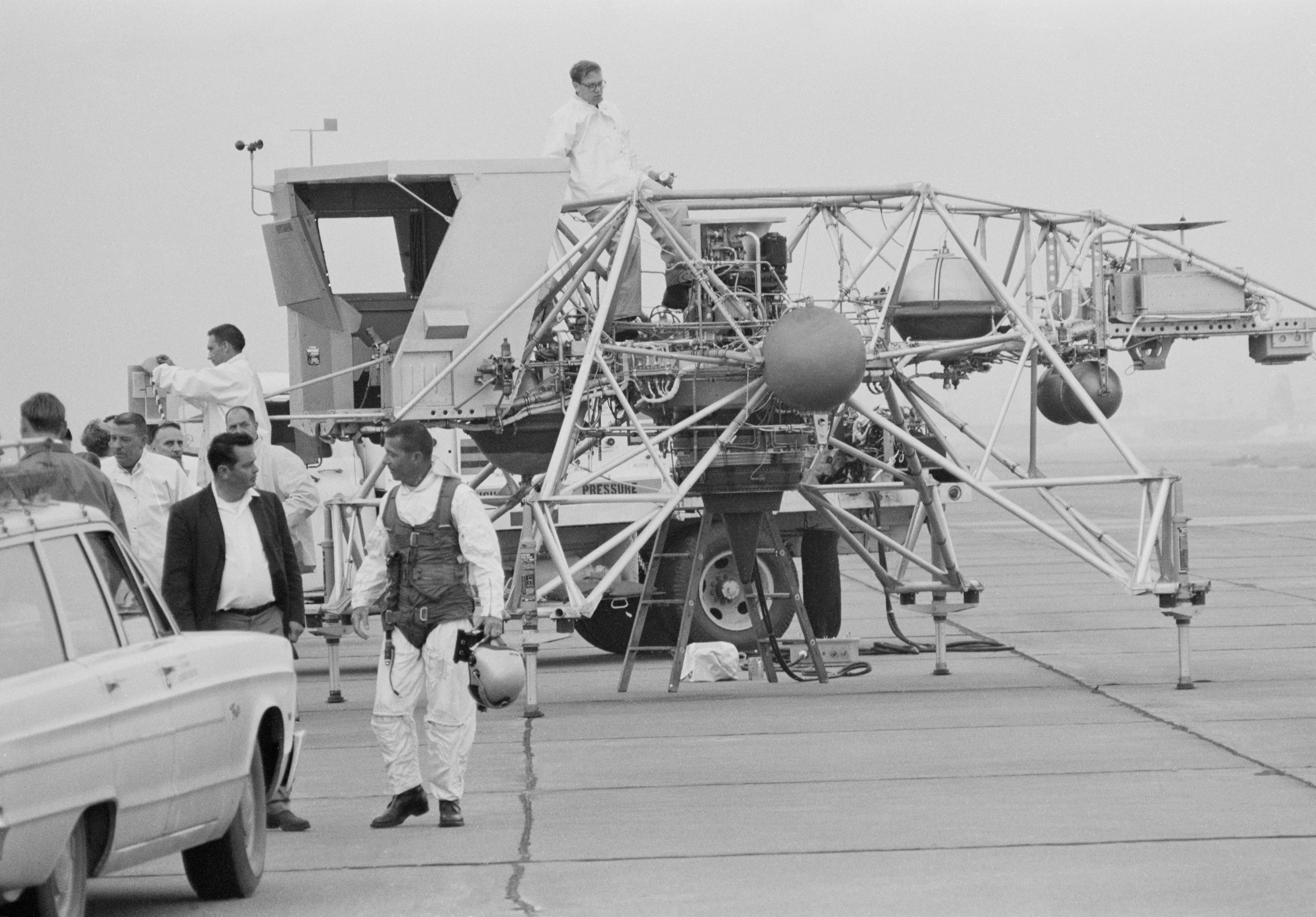This "first light" image from Hubble was released in May 1990, to illustrate the telescope's improved resolution when compared to ground-based observatories. On the right is part of the first image taken with the Hubble Space Telescope's Wide Field/Planetary Camera. It is shown with a ground-based picture of the same region of the sky from Las Campanas Observatory in Chile. The Las Campanas picture was taken with a 100-inch telescope and it is typical of high-quality pictures obtained from the ground.

The images of the stars in the ground-based picture are fuzzy, and in some cases overlap, because of the smearing effect of Earth's atmosphere. The same stars in the Hubble frame are sharper, as shown by the double star at the top of the image. In this early engineering picture, the Hubble images are roughly 50 percent sharper than the ground-based images.
The first image taken with Hubble was intended to assist in focusing the telescope. The region observed is centered on the 8.2-magnitude star HD96755 in the open cluster NGC 3532, in the southern constellation Carina. Identical small subsections of the Hubble and ground-based images were chosen to highlight the difference in resolution. The field shown is approximately 11-by-14 arcseconds in size and does not contain HD96755.








